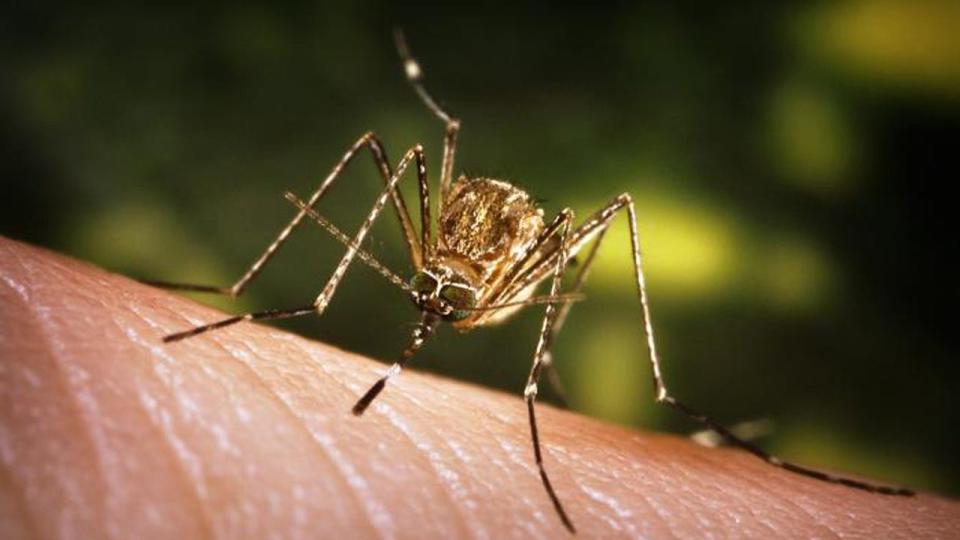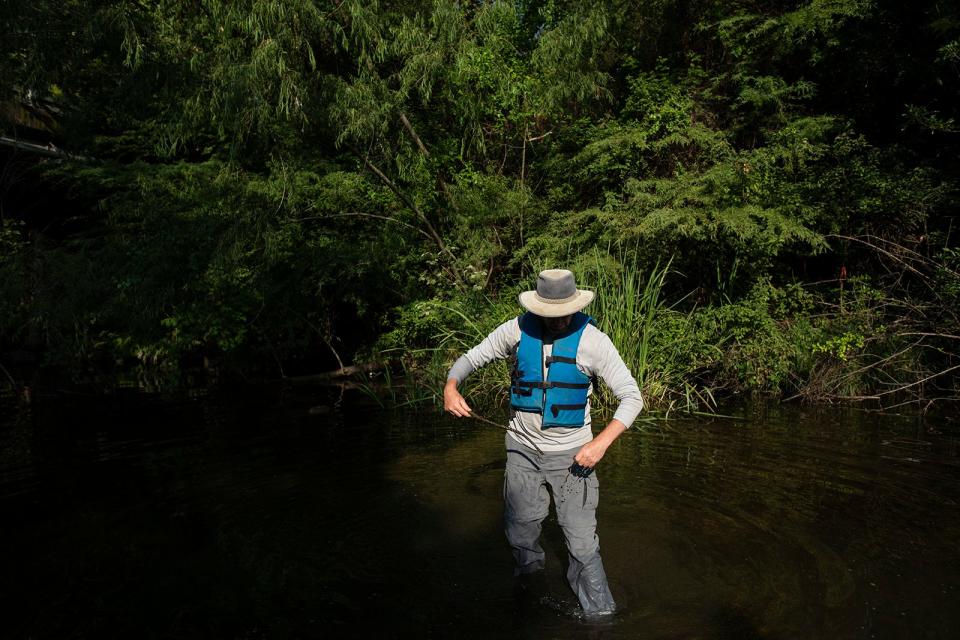If you live in Austin, here are 5 natural threats that can hurt you or kill you
Every winter in Austin unleashes cedar fever's allergy wrath on our throats and sinuses, producing the worst misery this side of COVID-19. But if that's the worst thing Mother Nature throws at you this year, consider yourself lucky.
Now's a good time to get acquainted with some of our nastier hazards. If you live in Central Texas, here are five natural threats — in no particular order — that can hurt you, or even kill you:
1. Severe weather, including floods and tornadoes
Bob Rose, meteorologist for the Lower Colorado River Authority — the agency that manages the Highland Lakes on the Colorado River for hydroelectricity and flood control — told the American-Statesman last month that "because of the terrain of Central Texas, we own the title of being one of the most flash-flood prone areas in the entire U.S."
The deadliest flood event in recent memory happened during Memorial Day weekend in 2015. Flooding across Central Texas, particularly in Hays County, southwest of Austin, left 14 people dead, including a dozen along the Blanco River.
Twisters also have taken their toll on Central Texas, a region that saw as many as five tornadoes tear up buildings and trees across seven counties in one night last year on March 21. But the deadliest tornado outbreak in Central Texas happened 25 years earlier. On May 27, 1997, the strongest of a series of tornadoes leveled neighborhoods in Jarrell, near Williamson County's northern border, killing 27 people and injuring 12 others.
New to Austin? Here's a guide to what a 'typical' year in weather should look like
2. Extreme temperatures — freezes and excessive heat
Sometimes the weather danger isn't from rain falling or debris flying through the air — sometimes it's the air itself. Austin's fickle weather can swing temperatures from one extreme to the other.
Next month, we'll be marking the second anniversary of the deadly weeklong freeze that strained the Texas power grid to the point of collapse; its icy grip made roads impassable and knocked out water pipes.
An American-Statesman investigation of the February 2021 freeze using death records found that at least 28people locally died as a result of the freeze. While the freeze directly caused some deaths through hypothermia and icy roads, government agencies probably undercounted the number of victims because so many died from health issues exacerbated by the lack of electricity, water and heat.
As deadly as freezes can become in Austin, we're more likely to encounter extreme heat, especially in summer but increasingly also in spring and fall. Last year the city had 68 days of triple-digit temperatures, beginning as early as May 21.
Temperatures weren't the only things soaring above 100 last summer. In July, when Austin had 29 days of triple-digit heat, Austin-Travis County EMS medics responded to more than 100 heat-related calls in the first two weeks of the month.
"We have run 106 heat-related calls since the first of July. Compare that to the same date period of July 1-15 of 2021; we ran 42," Austin-Travis County EMS Capt. Christa Stedman told KVUE-TV at the time. Medics responded to cases of heat exhaustion and heat stroke affecting all ages, from young children to elderly residents.
'She was my everything': A chaotic week of preventable deaths in Austin as Texas froze
3. Venomous animals such as snakes
When the atmosphere isn't presenting a threat, sometimes it's venomous residents on the ground. Most snakes aren't venomous, but you could come across four species that are in Central Texas:
Western diamondback rattlesnakes, which can be identified easily by the traditional “rattle” on their tails, are the most common rattlesnake in Texas and are most active at night.
Coral snakes, known by their red, yellow and black stripes, have red touching yellow on their bodies. Nonvenomous snakes, such as the Texas milk snake, have red and black touching.
Copperheads can be well-hidden in forests and have gray and brown bands.
Cottonmouths, also known as water moccasins, have brown, dark red or tan bands, and can be aggressive while being defensive. They are not always in the water.
If you are bitten by a venomous snake, call 911. Austin-Travis County EMS recommends that you:
Do not apply tourniquets to snakebites or try to “suck” the venom out of a snakebite.
If possible, take a picture or get a good description of the snake, but do not try to capture it.
Keep the injured area at or below the level of the heart.
Apply ice or cold packs to the injured area to help reduce swelling.
More:What to know about snakes in Central Texas
More:5 things to know if you come across a snake in your yard
4. Viruses such as West Nile or COVID-19
Central Texas public health agencies routinely test for and monitor the spread of viruses — from mosquito-borne diseases including West Nile virus to airborne contagions such as the coronavirus responsible for COVID-19.
For instance, Austin Public Health last month confirmed the season's first human case of West Nile virus in Travis County. West Nile virus is often thought of as a summer disease, but mosquitoes are present throughout the year. Williamson County detected West Nile in four mosquito samples last year, but no human cases were reported.

Meanwhile, the COVID-19 omicron subvariant nicknamed the "Kraken" — because of how hard it is to defend against — has officially been detected in Travis County, according to Austin Public Health.
"When mixed with a flu infection, the combination can cause serious illness for those at risk, such as children and seniors," said Dr. Desmar Walkes, the Austin-Travis County health authority.
5. Water hazards such as toxin-producing algae
During the past few years, Austin's Watershed Protection Department has been on the lookout for dihydroanatoxin-a, a potent neurotoxin that has turned up in blue-green algae growing in Lady Bird Lake and other local waterways. Since 2019, several dogs have died after ingesting water with the harmful algae.
Last July, algae samples taken at Barking Springs, downstream from Austin's iconic Barton Springs Pool, tested positive for dihydroanatoxin-a after the city reported that a dog had died July 10 within an hour of swimming there.

Last summer, the city found toxins in algae samples, but not water samples, at three sites on Lady Bird Lake and three sites on Lake Austin.
Symptoms of algae poisoning in dogs can include excessive drooling, vomiting or diarrhea, foaming at the mouth, jaundice or an enlarged liver, blood in their urine or dark urine, stumbling, loss of appetite, abdominal tenderness, progression of muscle twitches and respiratory paralysis.
Humans might experience a rash, irritation, swelling, sores, a fever, headache, eye irritation, or gastrointestinal, neurological, ear or respiratory issues.
This article originally appeared on Austin American-Statesman: Look out, Austin: These 5 natural threats can hurt you or kill you

